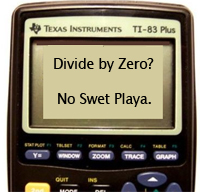

So, for example, say you were using a 10 minute chart and you wanted to find the 30 bar average JUST between 11:00 and 12:00. For example, say you wanted to create a strategy or indicator that focused on the volumes that occurred between 11:00 and 12:00 and JUST between those times of day. This gave me the idea that while the technique I read about may be useful, it is calculating volume based on parts of the day that you may not be interested in. You will need to log in to your account to access the information. If it is set to ‘Tick Count’ then volume is shown as ‘up ticks.’ You can find a good write up of all the different volume settings depending on chart type and what they mean at ///wiki.

a 1, 5 or 60 minute etc chart, if the ‘For volume use’ is set to ‘Trad Vol’ then the volume shown is ‘up volume’ (or volume that occurs on an uptick). The meanings of these terms vary depending on the timescale of the chart you are using. Incidentally, the symbol settings allow two options for volume (see below). The chart shows volume (the red and cyan vertical bars below the chart) and an average of the volume (the yellow line). In the following chart I added the Vol Avg indicator (click Insert – Indicator and scroll down until you find Vol – Avg). Often traders will create a plot on a chart by applying a Volume Indicator and an average volume indicator. I recently read an article in Stocks, Futures and Options magazine about a technical trading methodology that utilized volume to try and understand when tops or bottoms of the market may occur. This tutorial was created using TradeStation version 8.3 and works in later versions including TradeStation 9.5 and 10 and MultiCharts. The idea behind the series is that if you learn the TradeStation EasyLanguage yourself, you will have a skill that will enable you to program and try out trading ideas without the need to use a professional programmer.Īs always, the purpose of this tutorial is to demonstrate the programming techniques rather than to create a tradable indicator. Welcome to tutorial 19 in this series of tutorials that demonstrate and explain TradeStation EasyLanguage programming concepts.


 0 kommentar(er)
0 kommentar(er)
